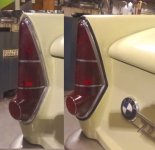Ray Brandes
Member
Offline
We are rebuilding a 907 engine for a Jensen-Healey. We are having the valves re-ground.
We are eliminating the paper gaskets under the cam towers and will use the 515 sealant.
Both of these things will reduce the thickness of the shims.
I will make some temporary shims, a bit undersized, and measure the lash.
Based on these measurements I will grind the original shims for the proper lash.
Is this how it is done?
Regards, Ray
We are eliminating the paper gaskets under the cam towers and will use the 515 sealant.
Both of these things will reduce the thickness of the shims.
I will make some temporary shims, a bit undersized, and measure the lash.
Based on these measurements I will grind the original shims for the proper lash.
Is this how it is done?
Regards, Ray

 Hi Guest!
Hi Guest!

 smilie in place of the real @
smilie in place of the real @
 Pretty Please - add it to our Events forum(s) and add to the calendar! >>
Pretty Please - add it to our Events forum(s) and add to the calendar! >> 


